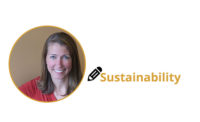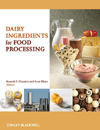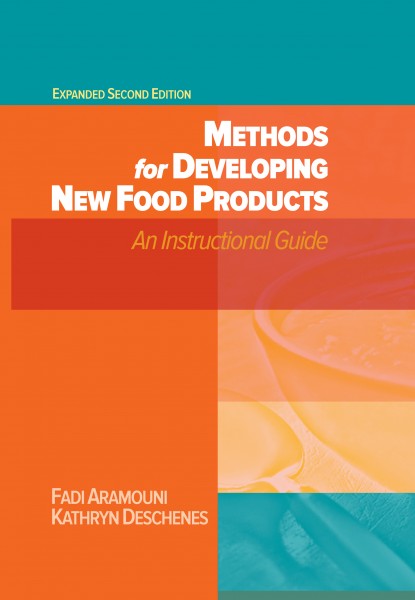Some 42% of consumers actively shop for food products that clearly
indicate fiber on the package. That’s according to research by Tate
& Lyle.
Some 42% of consumers actively shop for food products that clearly indicate fiber on the package. That’s according to research by Tate & Lyle.
According to the Decatur, Ill.-based company, it’s a bonus if product labels tout an “excellent source of fiber*” statement on the front of the package. Consumers agree this statement is appealing to them across many product categories.
In fact, nearly six in 10 (59%) of consumers say bread products with an “excellent source of fiber” are appealing.
As U.S. consumers slowly embrace healthier lifestyles, Tate & Lyle found that 55% of them focus on nutrition facts and ingredient labels.
“As a leading ingredient company in the U.S., Tate & Lyle is committed to understanding consumers’ needs as they start and maintain healthy lifestyles,” says David Lewis, business manager forPROMITORdietary fiber at Tate & Lyle. “With consumers pressed for time, food labels quickly communicate nutrition information to help them choose products that support their healthy intentions.”
Tate & Lyle also put together a list of eight approaches that consumers apparently take when reading labels.SF&WB added a few of its perspectives to the company’s observations.
No. 1: Is it a New Product?Many consumers are brand loyal and will scrutinize the labels of new products to determine if trial is necessary, Tate & Lyle reports.
SF&WBadds that new product rollouts are down about 50% this year because of the economy, according to research by Chicago-based Mintel. However, that doesn’t mean that innovation is lacking. In fact, a lot of the “herd mentality” of chasing fads and fringe trends has declined as bakers and snack producers stick to their core product lines in these tough economic times.
No. 2: Who is it for? Adult consumers aren’t the only ones trending more toward more healthful eating. Parents are exhibiting increased interest in reading labels if snacks, baked goods and other foods are for their children, according to Tate & Lyle.
Bakers and snack producers, however, have toldSF&WBeditors that if the kid “ain’t eating it, they ain’t buying it.” That’s especially true for families with children who are over 5 years old or in their teens. Ironically, children under 5 years old, or when they go to school, have some of the best eating habits because of their parents’ influences. Believe it or not, fruit is the top snack, according to several surveys. When they go to school, other influences such as peers and parental allowances allow kids to indulge in those more fun treats.
No. 3: Everyday or Indulgent Item? Consumers are more diligent about reading packages of everyday staples.
They also report having an interest in healthy indulgence, a trend thatSnack Food & Wholesale Bakerydocumented in its last two State of the Industry reports.
No. 4: Current Media Reports. Consumers are more inclined to read labels if they read or watch diet and nutrition feature stories by key media influencers like Oprah Winfrey and Dr. Oz.
No. 5: Influence of a Prior Diet Program. Bakers and snack producers should take note that Tate & Lyle research indicates that former dieters have learned to look for carbs and fiber from diets such as Atkins and Weight Watchers.
No. 6: Front Package Claims.When specific health claims are made on the front of packages, consumers tend to scrutinize the back and side panels of packages for additional information, Tate & Lyle reports.
Many wholesale bakers like Sara Lee have redesigned their packaging over the last year to bring this information to the forefront, according toSF&WB’sJune annual report.
No. 7: On a Diet. Consumers focus on the most important aspects of the package that are dictated by the diet they are currently following.
That’s why groups such as the Grain Foods Foundation are so critical to the future of the snack and baking industry’s long-term success, according to Dan Malovany, editor ofSnack Food & Wholesale Bakerymagazine.
No. 8: In a Hurry. Consumers, especially parents, are time-crunched and tend to read labels quickly to stay on schedule, according to Tate & Lyle.
Then again, they have been time-crunched for years. The added stress of a sagging economy, job losses, pay cuts, home foreclosures and other factors also have consumers searching for private label and heavily discounted products, according toSF&WB research.
Tate & Lyle’s research confirms that consumers continue to include nutrition in their food purchasing patterns.
In fact, many times, consumer education starts and ends with packaging, says Lisa Sanders, Nutrition Scientist, Tate & Lyle.
“Consumers want to make healthy choices and more than 60% of them rely on food and beverage labels to do this,” she says. “Research also shows that 50% of consumers look to labels when they are purposely trying to add specific nutrients, like fiber, to their diets.”
Editor’s Note: Check out SF&WB’s monthly Market Trends stories on www.snackandbakery.com.
Get our new eMagazine delivered to your inbox every month.
Stay in the know on the latest snack and bakery industry trends.
SUBSCRIBE TODAY!Copyright ©2024. All Rights Reserved BNP Media.
Design, CMS, Hosting & Web Development :: ePublishing






